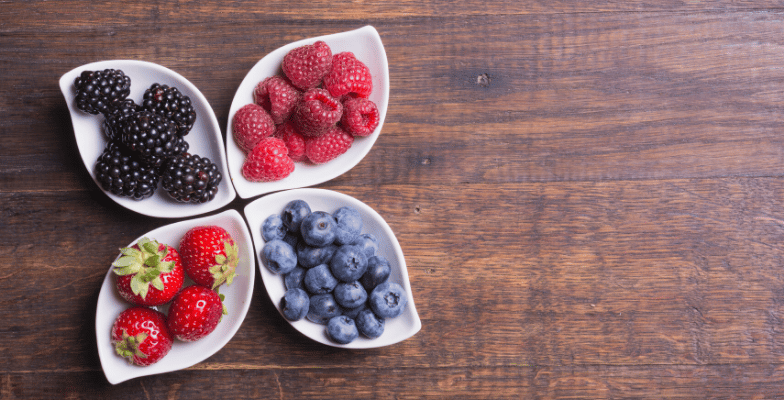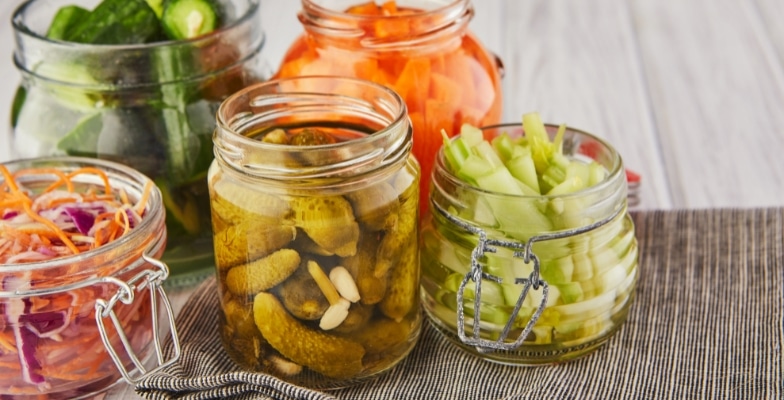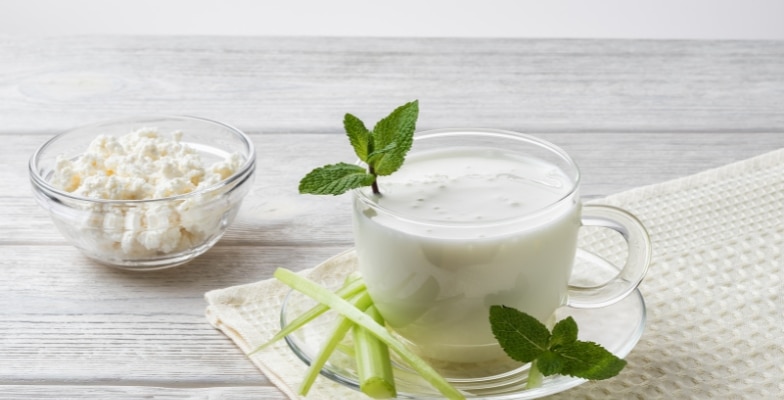Why Berries Are Good For You? | Berries Health Benefits
- Introduction
- Types Of Berries
- Berries Nutrition Facts
- Berries Health Benefits
- Berries Glycemic Index
- Conclusion And My Recomenndation

Introduction
Google the ‘Top Ten Healthiest Fruits,’ and I am sure that three of the ten fruits will be berries, probably strawberries, blueberries, and cranberries. When we talk about eating berries, blueberries, strawberries, or blackberries come to mind for me.
Botanically, berries are ‘Fruit with seeds and pulp from a single ovary of a single flower.’ So, one can classify grapes, cucumbers, tomatoes, oranges, watermelons, pumpkins, and even bananas as berries. But by standard definition, a berry is a small, pulpy, juicy, rounded, brightly colored, sweet, sour, or tart fruit without pits.
Raspberries, blackberries, and strawberries are not actual berries but are aggregate fruits that consist of several smaller fruits. Cranberries and blueberries, however, are real botanical berries.
Types Of Berries
Blueberries
Their color is from antioxidants that may help protect us from cancer, heart disease, diabetes, and dementia and boost the immune system. A half-cup has about 40 calories, fiber, and vitamin C.
Acai Berries
These are grape-like fruits known as a superfood. They contain high amounts of antioxidants, which may help reduce blood cholesterol, oxidative stress, and osteoarthritis symptoms.
Blackberries
These have many polyphenols and chemicals that may reduce the factors responsible for heart disease and cancer. These berries can help the small intestine break down sugar better, lowering the odds of developing type 2 diabetes. A cup of plain blackberries has 7g of sugar, 8g of dietary fiber, and ample vitamin C.
Strawberries
They are sweet, juicy, tart, heart-shaped fruits full of vitamin C, folic acid, and fiber. They are rich in plant compounds like polyphenols that may help lower high blood pressure and cholesterol, control blood sugar, and fight the effects of aging on the brain.
Goji Berries
They have been part of Chinese medicine for thousands of years. They are rich in vitamins C, B2, and A, iron, and phytochemicals like beta-carotene and zeaxanthin. They may help boost immunity, fight heart disease, boost brain function, aid digestion, improve eye health, and prevent cancer.
Cranberries
They are a sour superfood primarily made up of carbs and fiber. They are rich in healthy vitamins C, K, and E and plant compounds. They are consumed mostly as juice. Studies have linked the nutrients in cranberries to a lower risk of urinary tract infection (UTI), the prevention of certain types of cancer, a better immune system, and decreased blood pressure.
Aronia Berries Or Chokeberries
These are dark purples in color and are high in vitamins, minerals, and nutrients. They might help prevent cervical, skin, breast, and colon cancers and help fight liver disease, heart disease, and obesity.
Raspberries
They are found in different colors, mostly red and black, and less commonly, purple and yellow. Each color of berry has a unique combination of vitamins, minerals, and antioxidants.
Red Raspberries
They contain dietary fiber, vitamins C and E, selenium, beta-carotene, lutein, and many other antioxidants that may help fight cancer and protect the brain. A cup of raspberries has 8 grams of fiber and 50% of vitamin C’s daily requirement.
Cloudberries
They are tart and sweet. They look like raspberries but are orange in color. A 2/3-cup serving of these berries has twice the vitamin C of a glass of orange juice. They’re also rich in antioxidant vitamins E and A, so they are an ingredient in some skincare products.
Bilberries Or Huckleberries
These are similar to blueberries and are rich sources of antioxidants like anthocyanins and polyphenols. Bilberries can reduce inflammation and protect against diseases associated with oxidative stress, including cardiovascular disease, diabetes, and age-related cognitive decline.
Gooseberries
They are called amla in India and can be light green, pink, or red when ripe. They can be used to treat colds and fevers, help digest food, and be used as a hair tonic. Some studies suggest these berries could help fight cancer, boost liver health, prevent osteoporosis, and treat parasites and infections.
Red Currants And Black Currants
These grow in clusters like grapes. They are tart, tangy and good sources of nutrients and antioxidants.
Mulberries
These look like long raspberries or blackberries and are available in black, purple, red, and white. They are a very fragile summer fruit that may improve cardiovascular health, help manage type 2 diabetes, and prevent obesity. There are many more varieties of edible berries and a few poisonous inedible varieties as well.
Berries Nutrition Facts
Superfood is a term coined in the past few years for nutrient-dense, low-calorie foods high in vitamins, minerals, antioxidants, and fiber. Berries top the list of superfoods, as studies show they are high in micronutrients and antioxidants, essential for health.
However, berries may have an additional health benefit; they are rich in organic plant components which improve health, such as anthocyanins, the most potent antioxidant, which is also responsible for their colors.
Various studies show that antioxidants in berries have a range of potential anti-cancer and heart disease properties, including antioxidant, anti-inflammatory, and cell regulatory effects. 1https://www.researchgate.net/publication/276957450_Potential_Health_Benefits_of_Berries One can eat berries fresh or frozen. Freezing may deplete a few nutrients, but it may increase antioxidant content. 2https://fdc.nal.usda.gov/fdc-app.html#/food-details/786756/nutrients
Berries Health Benefits
Heart Health
Berries are a dietary source of multiple compounds and nutrients, flavonols, vitamins, and fiber, that help boost heart health and reduce CVD risk. A study led by researchers from the Harvard School of Public Health (HSPH) found that women who eat three or more servings of blueberries and strawberries each week may have a lower risk of a heart attack.
Blueberries contain anthocyanins, flavonoids that may benefit the heart by improving blood flow and preventing plaque from collecting in the arteries. Many studies indicate that regular consumption of berries may play a role in preventing cardiovascular disease. 3https://pubmed.ncbi.nlm.nih.gov/18258621/, 4https://pubmed.ncbi.nlm.nih.gov/17906180/, 5https://pubmed.ncbi.nlm.nih.gov/19785767/
Cancer Prevention
The American Institute for Cancer Research notes that berries like blueberries, raspberries, blackberries, and strawberries are rich in dietary fiber, vitamin C, magnesium, antioxidants, and protective plant compounds like anthocyanins and polyphenols; all play an essential role in a cancer-protective diet. 6https://www.aicr.org/resources/blog/enjoy-the-health-benefits-of-berries/
Berry consumption may also protect the body from the toxic effects of cancer chemotherapy. 7https://pubmed.ncbi.nlm.nih.gov/18211019/
Antioxidants
Generally, all fruits and vegetables are high in antioxidants. Still, berries contain exceptionally high amounts of antioxidants known as polyphenols and anthocyanins and vitamins A, C, and E, which protect cells from damage and possibly from disease.
Anthocyanins are one of the most potent natural antioxidants, and the highest concentrations are in berries skins. 8https://www.ncbi.nlm.nih.gov/pmc/articles/PMC5890122/, 9https://pubmed.ncbi.nlm.nih.gov/26515081/
Neurological Function
Diet plays a crucial role in improving age-related neurological dysfunction. Studies suggest that dietary berry extracts can protect against and even reverse specific age-induced declines in brain function, such as learning, memory, and motor performance. 10https://www.ncbi.nlm.nih.gov/pmc/articles/PMC4192974/
A study by the Harvard School of Public Health (HSPH), led by Xiang Gao, a research scientist in HSPH’s Department of Nutrition, suggested that people who consume foods high in flavonoids like berries are 40% less likely to develop Parkinson’s disease. 11https://www.sciencedaily.com/releases/2011/02/110213162726.htm
Natural antioxidant and anti-inflammatory compounds such as anthocyanins and caffeic acid found in berries can help prevent the effects of aging by reducing or delaying the development of age-related neurodegenerative diseases. 12https://www.ncbi.nlm.nih.gov/pmc/articles/PMC4192974/
Diabetes Management
Studies show that berries, particularly bilberry and black currant extracts, chokeberry juice, cranberry extracts, and freeze-dried strawberries, positively affect plasma glucose in subjects with risk factors type 1 or type 2 diabetes mellitus. 13https://www.ncbi.nlm.nih.gov/pmc/articles/PMC7202899/
They can also benefit from dyslipidemia (high lipids due to diet) or metabolic syndrome (risk factors that raise heart disease risk and other health problems, such as diabetes and stroke. 14https://www.ncbi.nlm.nih.gov/pmc/articles/PMC5187532/ Berries also help maintain weight as they provide fullness due to their high fiber and water content. 15https://pubmed.ncbi.nlm.nih.gov/26162950/
Berries Glycemic Index
Glycemic Index (GI) is a value between 0 and 100 that describes how the food will raise blood sugar levels. Pure glucose has a GI of 100. A different means called the glycemic load gives a more accurate picture of how food items impact blood sugar.
Glycemic load (GL) describes the quality (GI) and the number of carbohydrates in a food serving. Below 55 is a low glycemic index. A glycemic load of 10 or less is low, and 11-19 is medium.
Related Article: What Is Glycemic Index | Food List With Glycemic Index
Berries have a low glycemic index and load, so they don’t raise blood sugar levels as much as other fruits. They are also high in fiber and plant pigments, which block certain digestive enzymes to slow digestion, preventing spikes in blood sugar after eating high-carbohydrate foods. 16https://pubmed.ncbi.nlm.nih.gov/16498205/
Conclusion And My Recomenndation
Berries can be eaten raw as a snack, as a topping on cereals, blended in a smoothie, baked into muffins, or as fruit preserves. In today’s ‘Master Chef Kids’ world, even kids know how to include berry blessings as healthy school lunches or post work out meals.
Berries are available in different colors, which means they have entirely different nutrient profiles, so it’s best to include a mix of berries in the diet a few times a week.
What do you think about this article? Have any questions? Let me know in the comments below!

Skill-Based Education.
Global Recognition.
Powerful Community Building
Secure a certificate of completion in as little as a day by graduating from one of our free courses.
Get Access to Our Free Courses. No Credit Card Required.

Fabulous Body Membership
Your All-Access Pass to A Fabulous Body & A Rewarding Career
25+ Certificate Courses & Programs, All Included
15 Day Free Trial, 100% Money-Back Guarantee
About Kamini Thakar
Kamini is a very skilled writer/content creator. As a part of Fabulous Body for years, she has authored many articles really proving her prowess in acquiring and presenting knowledge about various health & nutrition topics.











Good to read facts about all berries in one place. Great article.
Thanks